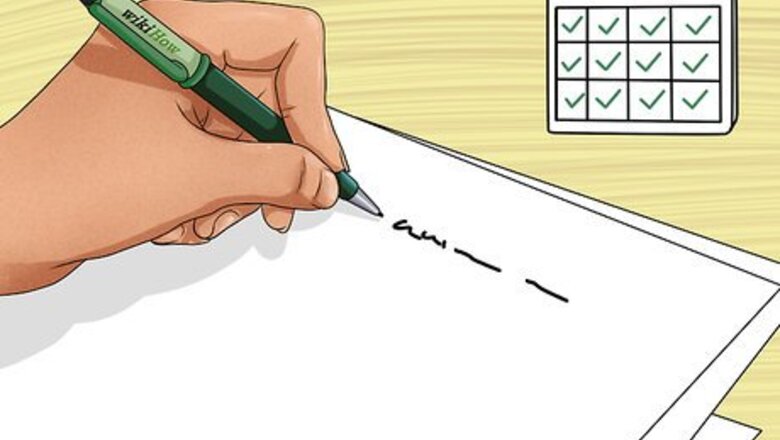
views
Left-handers can also become right-handed by reversing the steps in this article. For some left-handed people, being able to use the right hand with facility has the additional advantage of overcoming the inconvenience of being left-handed in a world designed for right-handers.
Writing Practice
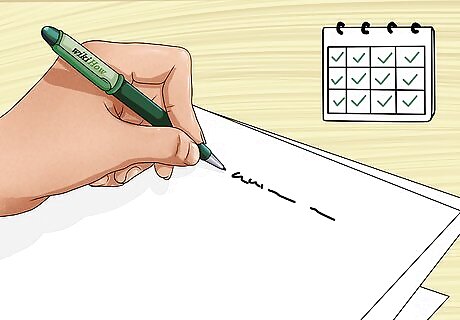
Practice using your left hand daily. Becoming proficient with your left hand will not happen overnight - it's a process that could take months or even years to complete. So if you want to learn how to use your left hand, you will need to commit to practicing daily. Set some time aside each day to practice your left handwriting. It doesn't need to be much; even 15 minutes a day will help you to improve at a satisfying pace. In fact, it is better not to commit yourself to practicing for long periods of time, as you will probably get frustrated and be inclined to give up. Practicing a little every day is the best way forward. Practice drawing letters in the air. Start by doing this exercise with your right hand, and then transfer it to your left hand by copying. Transfer the skill to paper later; sustained practice will be required to properly prepare your muscles.
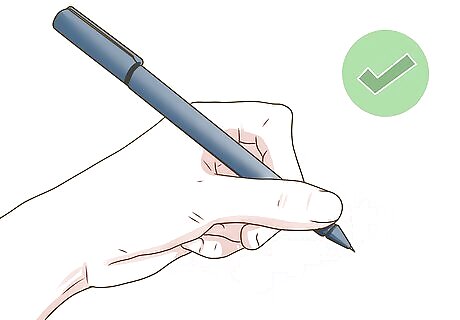
Position your hand correctly. When training yourself to write with your left hand, it's important that you hold the pen or pencil comfortably. Many people are inclined to grip the pen too tightly, balling their hand up into a claw around it. However, this creates tension in the hand, causing it to cramp up and become tired easily. When this happens, you will not be able to write well. Keep the hand loose and relaxed instead, mirroring how you hold the pen with your right hand. Make a conscious effort to relax your hand every few minutes while you are writing. The materials you write with can also make a significant difference to how comfortable you find writing with your left hand. Use nice quality, lined writing paper and a good pen with free-flowing ink. Also tilt the paper or writing pad you're working with 30 to 45 degrees to the right. Writing at this angle should feel more natural.
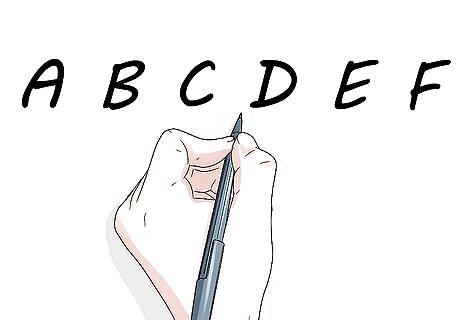
Practice your ABC's. Begin by writing out your ABC's with your left hand, in both capital and lowercase letters. Go slowly and carefully, concentrating on making each letter as well-formed as possible. Accuracy is more important than speed for now. As a point of comparison, you should also write out your ABC's using your right hand. From then on, you can focus on getting the letters you write with your left hand as perfect as those you write with your right. Hold on to your practice pages by keeping them in a folder somewhere. Then when you reach a point where you feel frustrated and tempted to give up on your quest to become left-handed, you can look back on these sheets and see how far you have progressed already. This should give you renewed motivation to continue.
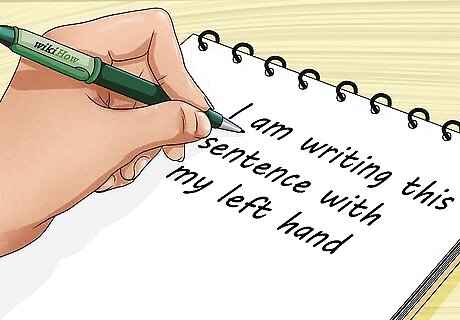
Practice writing sentences. When you become tired with the ABC's, you can progress onto writing sentences. Start with something simple like "I am writing this sentence with my left hand." Remember to go slowly and focus on neatness rather than efficiency. Then try writing "The quick brown fox jumps over the lazy dog" over and over again. Since this sentence contains every letter of the alphabet, it's a good one to practice with. Other sentences containing all 26 letters are: "The five boxing wizards jumped quickly" and "Pack my box with five dozen liquor jugs".
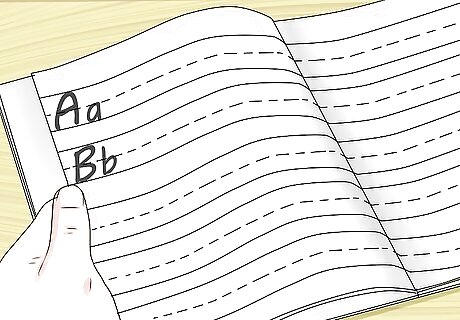
Use writing workbooks. When children are learning to write for the first time, they use writing workbooks where they can trace over letters made from dotted lines. This helps them to control their hand movement and gain accuracy. When learning to write with your left hand, you are essentially teaching both your hand and your brain how to write all over again, so using these workbooks is not a bad idea. You can also use copies with extra lines on the paper to ensure your letters are in the correct proportions.
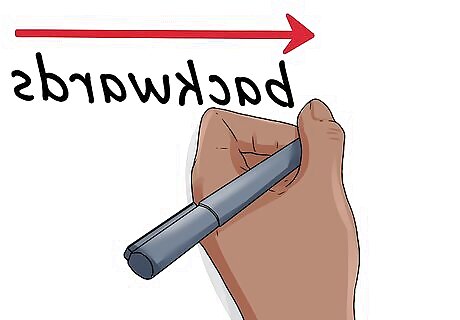
Try writing backwards. In the English language, along with many other languages across the world, people write from left to right or from "thumb to pinky". This feels natural for right-handed people. It also helps to prevent the ink from becoming smudged as your hand moves across the page. For left-handed people, however, this movement often feels unnatural and can make a mess as the hand moves across the fresh ink. For these reasons, left-handed people often feel more comfortable writing backwards. In fact, the famous artist Leonardo da Vinci was left-handed and often wrote notes and letters backwards. They could only be deciphered by holding the paper up to a mirror and reading from the reflection. Practice your own backwards writing with your left hand -- you might be surprised at how easy you find it. Remember to write from right to left, "thumb to pinky" on your left hand. You will also need to write the letters backwards for true backwards writing!
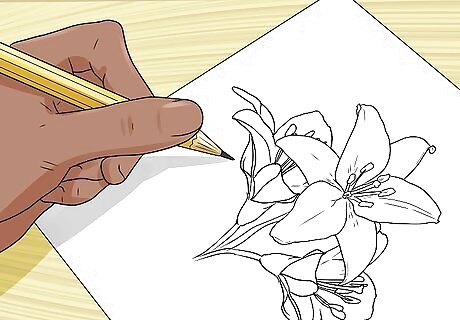
Do some drawing. Although the goal is to learn how to write with your left hand, you can also benefit from drawing with your left hand. This will give you valuable practice in controlling your left hand, while also building strength. Start with something simple, such as like circles, squares, and triangles. Then progress onto sketching items you see around you, like trees, lamps, and chairs, then if you're feeling particularly confident, people and animals. Drawing upside down (known as inverted drawing) using your left hand is another great exercise you can try. This will not only improve your writing skills, but it is also a great brain-training exercise which will open you up to more creative thinking! Many great artists such as Michelangelo, da Vinci and Sir Edwin Henry Landseer were ambidextrous. This enabled them to switch from one hand to the other while drawing or painting if their hands got tired or they needed to work at a particular angle. Landseer was also famous for being to draw with both hands simultaneously.
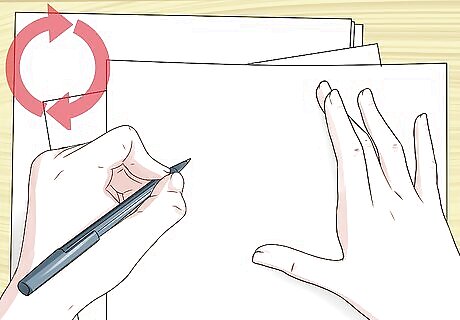
Have patience. As mentioned above, learning how to write with your left hand is a process that will take time and dedication. You will need to be patient with yourself and prevent yourself from giving up too easily. Remember that it took you years to master writing with your right hand as a child and even though it shouldn't take you quite this long to write with your left (as some of the skills are transferable) the learning process will take time. Don't worry about speed initially; just keep practicing with as much control and accuracy as you can, and you will become faster and more confident with time. Keep reminding yourself of what an impressive and useful skill it will be when you can write with your left hand. Staying motivated is the biggest challenge you'll face as you work towards becoming left-handed.
Strength Training

Do everything with your left hand. Skill automatically transferred from your right hand to your left hand somewhat in all those previous years of your life, so it won't be extremely hard to start doing things with your left hand at first. Since skill also automatically transfers from one task to another task somewhat, you will gain the skill faster to do a specific task with your left hand if you do all tasks with your left hand than if you do just that task with your left hand. Be patient. Some people say the older you are, the harder it is to change to left-handedness but that's misleading. The illusion that changing handedness is easier at a younger age comes from the fact that the higher the skill you have with your right hand, the lower the patience you have for a given amount of skill in your left hand. In fact, the older you are, the shorter it takes for your left hand to gain a given absolute amount of skill. The easiest, but most important thing you can do to strengthen your left hand is to use it to complete all of the actions and activities you would normally do with your right hand. Make an effort to brush your teeth holding the toothbrush in your left hand. You can also comb your hair, pick up your coffee cup, butter your bread and open doors with your left hand, among many other daily activities. Also try throwing darts (in a safe environment), playing pool, or throwing and catching a softball with your left hand If you're finding it hard to remember, and keep using your right hand accidentally, try bandaging the fingers of your right hand together. This will prevent you from being able to use it and force you to use your left hand instead.
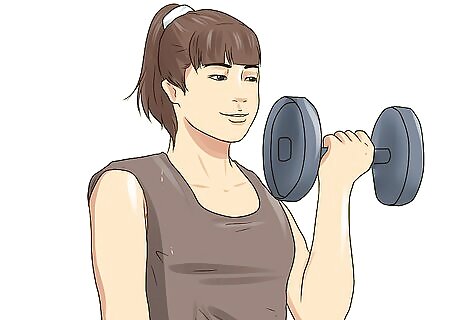
Lift weights with your left hand. One of the best ways to strengthen your left arm and hand, and correct any strength imbalances between your dominant and non-dominant sides, is to lift weights. Hold a dumbbell in your left hand and do exercises such as bicep curls, kickbacks, hammer curls and dumbbell presses. Start with a low weight, then move up to heavier weights as your strength improves.
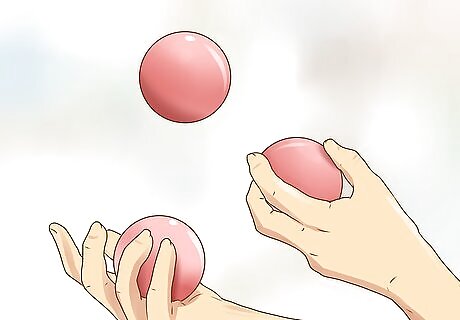
Learn how to juggle. Learning how to juggle using three and then four balls is a great way to strengthen your left hand and arm, while also providing you with an impressive party trick!

Practice bouncing balls. One great exercise for improving ambidexterity and strengthening your non-dominant hand is to take two table tennis rackets and two balls and to bounce them simultaneously with both hands. Once you master this, you can progress to using smaller rackets, or even wide-ended hammers. In addition to improving your left-hand usage, this is a fantastic whole brain exercise!
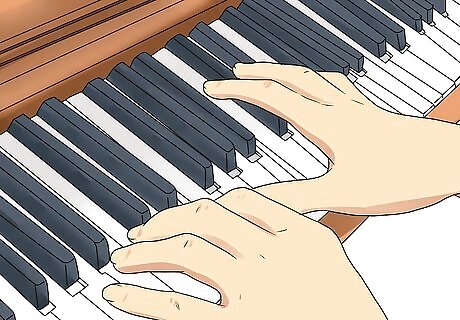
Pick up a musical instrument. Many people who play musical instruments (which require the use of both hands) are already somewhat ambidextrous. As a result, picking up a musical instrument -- such as the piano or -- and practicing everyday will help you to strengthen your left hand.

Go swimming. Swimming is another ambidextrous activity which has been proven to help with balancing the brain hemispheres, allowing you to use you non-dominant hand more fluidly. Hit the swimming pool and do a few lengths to strengthen the left side of your body and get a great cardio workout at the same time!
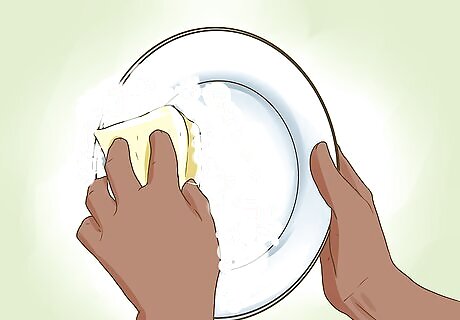
Wash dishes with your left hand. Washing Dishes regularly with your left hand is a safe and simple method to improve on the dexterity of your non-dominant hand. This can be both fun and useful in the long run, apart from cleaning the dishes.

Start doing finer motor tasks such as mirror writing, playing pool, cutting cords out of shrimp, and throwing darts with your non-dominant hand now that you practiced it up with simple tasks. Doing that will also practice up the general skill of automatically transferring skill from an action to its mirror image so that the next task you start doing with your left hand that you used to do with your right hand, you will be a tiny bit more skilled at doing it with your left hand when you first start than you would have been if you had never done it with either hand before. It may take many years for your left hand to catch up to the skill of your right hand but probably less than 2 months for your left hand to become very nearly as skilled as the right hand. Once your left hand becomes skilled enough to do the job easily, there's no need to be impatient about your left hand becoming more skilled just because your right hand is even more skilled. You can skip the steps 2-7 if you want to hurry up and become ambidextrous and can handle the boredom of doing them slowly at first.
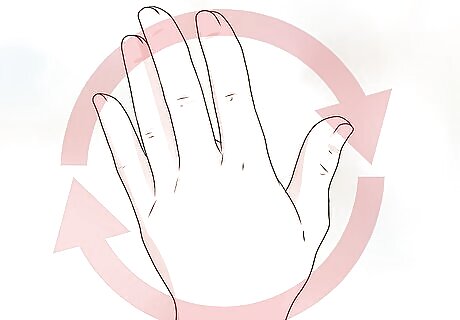
Remember to use your left hand at all times. Using your dominant right hand has become so ingrained in your brain that you will use it automatically, without thinking. This can be a problem when you are attempting to become left-handed. To overcome this problem, try to come up with a system to remind yourself to use your left hand whenever you do something. For example, write the word "left" on the back of your left hand and the word "right" on the back of your right hand. This will act as a visual reminder every time you go to pick up a pen or complete some other activity. You could also try wearing your watch on the right wrist instead of the left. This will really help your subconscious to register that you are trying to change sides. Another thing you can do is place sticky notes on things like the phone, the refrigerator, and the door handles. These will remind you to use your left hand whenever you reach out to touch them.
















Comments
0 comment